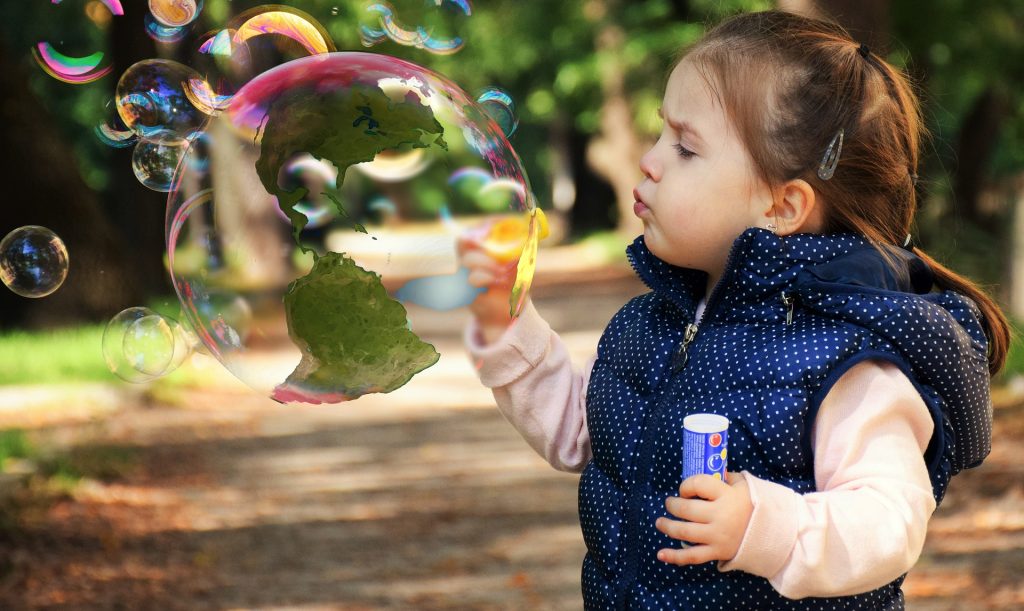What if I told you that you could help save the environment, and all you’d have to do is communicate with your baby?
The act of Elimination Communication is something that has interested me for years, and something I have chosen to undertake in my own household. In this special 3-part blog series, I’m going to share my knowledge with you, and maybe inspire you to look into EC further or even empower you to give it a go with your own little ones.
Elimination Communication is known by many names – EC, Natural Infant Hygiene and Infant Potty Training are commonly used to describe the same action. Paediatrics Publications defines Elimination Communication as “the practice of using the infant’s natural timing and cues to recognise when they need to defecate or urinate”. Essentially, it’s the act of learning baby’s ‘I need to go to the bathroom’ cues and allowing them to go to the toilet in the potty, rather than in a nappy.
The mainstream narrative on EC is cemented heavily in disposable nappy advertisements, but definitely isn’t as ‘scary’ or ‘unhygienic’ as many seem to think. Most infants naturally go to the toilet at predictable times, such as after waking or feeding. Baby’s also give ‘clues’ that this time is approaching (i.e. momentarily going still, squirming, fussing at the breast, pulling faces, crying, etc). Couple this knowledge with consistent and predicable communication from Mum and Dad, babies can associate their caregivers’ cues (i.e. making certain sounds with elimination), maintain their awareness of when they are eliminating and learn to communicate these needs therefore eliminating the need for nappies sooner rather than later.
But why bother cutting out nappies out at all?
A confronting statistic recently released by Sustainability Victoria shows that a staggering 3.75 million disposable nappies are used each day in Australia and New Zealand. Your average nappy is made of synthetic polymers and plastic, which simply aren’t manufactured with environmental conservation in mind. Additionally, approximately 3.4 million tonnes of used nappies make their way to landfill annually, taking approximately 150 years per nappy to break down. The implementation of Elimination Communication in your home can significantly help reduce your contribution to this concerning statistic.
But there’s also something in it for you.
A typical baby goes through approximately 6000 disposable nappies before transitioning to underwear. With the total cost of nappies (excluding wipes, nappy rash cream and other related accessories), this equates to approximately $1800 – $3000 per child (dependent on brand purchased). According to Darlings Downunder, households employing the use of reusable fabric nappies spend just under $60 yearly just having to wash these items, not to mention the purchase cost of the reusable nappy itself, costing approximately between $20-40 each (brand and fabric dependent).
Statistics aside, Elimination Communication is more hygienic for bub than nappies, cutting out the possibility of urinary tract infections bred in the moisture of a used nappy; as well as creating less ‘messy’ wipe-downs caused by waste being ‘smooshed’ through a nappy and all over bub. Of course, there is also the added bonus of being able to bond with your little one at an early age, through clear communication and understanding of one another.
If Elimination Communication is something you would like to investigate further, I’d highly recommend Lauri Boucke’s book Infant Potty Training which I used to get started. Another great resource I discovered since is the website Go Diaper Free. Andrea is a psychiatrist, has a FREE 1 page Easy Start Guide for Download to help get you started and I can personally vouch for her comprehensive book Go Diaper Free. It is super practical and so easy to understand, you will feel confident in implementing the practise even if you are new to the concept. Andrea also has a private group (which you get free when you purchase the book) which is dedicated to helping you confidently get started with infant potty training no matter the age of your babe. FREE 1 page Easy Start Guide for Download to help get you started
Also, feel free to join me for my next two posts delving deeper into the fascinating world of Natural Infant Hygiene- My EC Journey and Myth Busting Some Common Myths About Elimination Communication.
Sources:
Bender, J.M. and She, R.C., 2017. Elimination communication: Diaper-free in America. Pediatrics, 140(1). Available: https://pediatrics.aappublications.org/content/pediatrics/140/1/e20170398.full.pdf
Darlings Downunder, 2012. The Cost of Cloth (online) available: https://www.darlingsdownunder.com.au/the–cost-of-cloth.htm (date accessed Sept 2020)
McDonnell, J., 2015. What are nappies actually made from? (online) available: https://www.canstarblue.com.au/family-gifts/what-nappies-are–made-from/ (date accessed Sept 2020)
Real Diaper Association, n.d. Diaper Facts (online) available: http://realdiapers.org/diaper-facts/ (date accessed Sept 2020)
Sustainability Victoria, n.d. Eco-friendlier alternatives to disposables nappies (online) available: https://www.sustainability.vic.gov.au/nappies (date accessed Sept 2020)
Sanghavi, D., 2011. Could Your Child Have a UTI? (online) available: https://www.parents.com/baby/health/other-issues/could-your-child-have-a-uti/#:~:text=Babies%20are%20especially%20vulnerable%20to,and%20sometimes%20cause%20an%20infection (date accessed Sept 2020)


